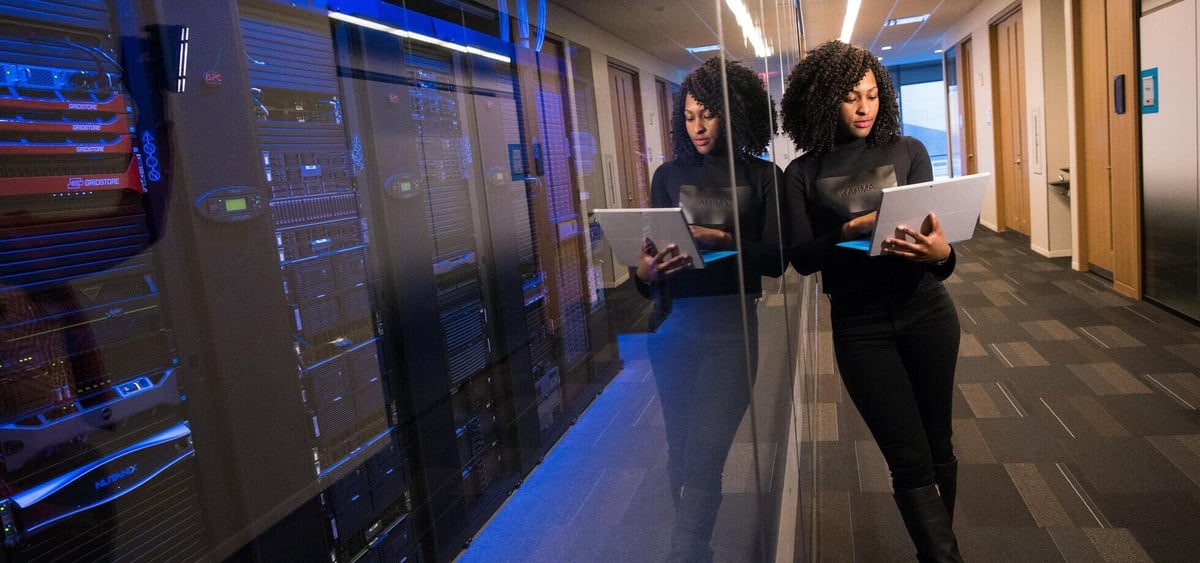Get More Automation Value With AI: Your AI Playbook (Part 2)
Share at:

Robotic process automation (RPA) is just the start—it’s the foundation, but not the destination, of your automation program.
In part one, you learned how to test whether your automation program and your company are ready for artificial intelligence (AI). In this post, I’ll dive into the nitty-gritty: how you and your automation team can implement AI on the ground level.
AI models are both an accelerant and a multiplier for your automation program.
The ROI for an RPA investment ranges from 30% to 200% in the first year, according to case studies done by Leslie Willcocks, professor of technology, work, and globalization at the London School of Economics’ Department of Management. Among UiPath customers, we’ve seen companies reach ROI in as little as one month (DHL Global Forwarding, Freight), achieve a 2:1 ROI (Postbank), and more.
And a return is just the start: companies have found benefits in increased productivity, improved employee engagement, and reduced errors. Imagine, then, what adding cognitive intelligence to your automation suite can do. Error handling? Exceptions? Human in the loop? AI can help.
In a webinar on the AI Playbook (held during our AI Summit), Brian Klochkoff, Head of Automation for Americas at dentsu international, joined me to explain how adding AI models to your automation program can unlock and create value.
Design an AI execution support plan
In part one of this article series, we showed you how to demystify AI and engage people with the possibilities of AI. We also discussed how to demonstrate the case for investing in AI. Once you win over your stakeholders, you don’t want to waste that momentum. Make sure you’re ready to run with an execution plan that consists of the following elements.
AI governance and ethics
Governance and ethics for AI is a relatively new field, so the path forward is not well-trodden. Many companies and government entities are still working out what governance looks like, especially as it relates to ethical considerations.
For the most part, however, a typical center of excellence (CoE) governance model works as well for AI as it does for RPA. The keys, which are important to an RPA CoE too, are to build rules for accountability, transparency, and fairness.
How do you avoid systemic biases from your model and data, for instance? You need to have control points that enable you to trace decisions back to a human, to a robot, or to some mixture of the two. This part of your execution support plan will include rules about data privacy and cybersecurity, too.
We put governance and ethics up top because governance and ethics need to be a dedicated effort from the team that’s executing AI. Anything less than top priority creates a risk that your company doesn’t want to take on.
Operating model
We’ve written about the automation operation model multiple times, including:
Considerations to make when building a team
Optimizing for your full automation potential
When it comes to AI, the core of your operating model must be a cross-functional team. This cross-functional team includes people from the business, data analytics, RPA, and support sides. It’s important that you design your operating model such that there are no silos. Your interaction channels should be efficient, with plentiful opportunities for collaboration.
Determine early on whether you’ll build models in house or use pre-built models. This decision will affect your infrastructure requirements and your resources, which we’ll get into in the next two sections.
Ideally, your operating model has a structure that enables the integration of new technologies as they emerge and as you’re able to adopt them. Integration and adoption have to operate within the realities of your software development lifecycle (SDLC) and the demands of governance.
At dentsu, according to Klochkoff, “We see the operating model as being the wrapper around all of these things.” As such, dentsu focuses on creating comprehensive documentation and publishing that work, transparently, on the company’s intranet. “People can understand what we’re about and how they can get involved.”
Infrastructure and support
Once you determine governance and operations, you’ll want to think about infrastructure. Are you going to host your AI platform on-premises, air-gapped, or in the cloud? Where are you going to stand up the machine? How are you going to host the data that fuels those AI models? You’ll want to decide here, too, which methods you use for training.
Depending on these decisions, the lead time, required effort, and budget will all change, so make them carefully.
Resource skills
With your infrastructure settled, you’ll want to evaluate how skilled your current resources are and what skill gaps there might be. Your core resource will be RPA developers who can upskill and learn to apply AI to RPA. Data scientists will play key roles too, the ideal scenario involving a team where RPA developers and data scientists work together closely.
Depending on your previous decisions, you’ll likely be able to upskill current employees but think carefully about hiring from outside too. You will need a mix of resources to get the results you want.
dentsu built personas around who on their team is involved in the CoE, what skills they have, what they’re working toward, and what certifications they have. Klochkoff sees their work culminating in a “cross-functional community.” dentsu wants to create a path for learning—managed by governance—that enables employees to augment their current skillset.
Klochkoff emphasized that “technology is evolving at such a rate where it’s difficult sometimes to keep up with [your] own knowledge.” He recommends you pause at least once a week to give your team time to catch up on release notes, webinars, and white papers. “We didn’t always do that,” Klochkoff warned, “and it meant we missed out on some of the functionality that we could embed into our solutions.”
Integrate AI into your existing RPA program
With an execution support plan up and running, you’re ready to start integrating. The keys to integrating AI are twofold: make your RPA and data analytics CoEs work together and adjust your software development cycle to include AI.
Encourage your two CoEs to collaborate
CoEs tend to fall into one of two models, each requiring different collaboration strategies.
In an individual CoE model, individual RPA and data analytics CoEs report to different departments. Generally, the CoEs work apart and independently.
To achieve greater collaboration, the RPA CoE can proactively reach out to the data and analytics CoE. Together, they can find business use cases that benefit from their synergy. This might require explaining RPA to the data analytics team, but the benefits of that mutual understanding are immense.
It’s an evolution. In the early days, it was just two of us building automation solutions with real impact and sharing knowledge throughout the enterprise to prove the value of an Automation CoE. Now, our team is accountable for the enterprise's automation tech stack which enables automation capabilities/solutions throughout the business.
- Brian Klochkoff, Head of Automation, Americas, dentsu international
In a singular CoE model, a single CoE incorporates all automation technologies and reports to one lead—typically a chief digital officer or chief automation officer. CoE leaders can leverage this consolidation to focus the CoE on a mandate to automate.
There isn’t one correct model for all organizations. You'll need to weigh the pros and cons of each model, along with your goals and where you are in your automation journey, to determine which model is best for your organization.
Over time, however, as companies add more automation technologies, individual CoE models tend to evolve into singular CoE models.
As they demonstrated value and articulated it to leaders and operations leads, they were able to explain how AI mitigated human-in-the-loop challenges and extended the ability of automation to take on “more complex problems.”
Once companies have a portfolio of AI and automation technologies, it’s natural to start thinking about how they can make them harmonious.
Adjust your software development lifecycle
If you are using an individual CoE model, for the SDLC to operate at peak effectiveness it needs the orchestration of both CoEs. Generally, both technologies will follow the same SDLC, but the subtle nuances change how you can best orchestrate. To introduce a structure that can accommodate AI, focus on the following six components.

Identify: start with the business problem, not the technology solution. Get RPA, data scientists, and business users together—ideally in the same room—to identify problems that suit AI solutions. Before doing anything else, determine whether using RPA and UiPath AI Center will solve the problem at hand. And if you do determine AI Center fits, figure out what the machine learning (ML) model should be solving.
Design: the layering of AI requires design consideration. As you start designing, determine whether your RPA developers will need to design their RPA solutions any differently with the addition of ML. Additionally, you’ll want to ask your data team what data preparation their ML modeling will need.
Develop: at this stage, you can allow your RPA and data scientist teams to diverge and make their individual components as long as they follow their respective DevOps policies and procedures. Determine the level of orchestration necessary between your data and analytics CoE and your RPA CoE. Know, in the end-to-end workflow, how the input of one technology will create the output of the next technology.
Test: ensure your user acceptance tester, as well as your CoEs, knows what to expect at each stage of the SDLC. RPA tends to be straightforward, so testing is definite. You either pass or not. ML is about gradual improvement, so models include a confidence threshold that will improve over time.
Deploy: the advance of modern automation technologies has made AI Ops easier than in years past. Determine whether the RPA CoE handles the deployment of AI models to AI Center. Update your deployment checklist to ensure that checks are in place. The actual act of deployment is now quite simple.
Maintain: determine how your teams mitigate and manage the effects of external changes, and determine which team maintains AI models after deployment. In RPA, everyone knows whether the robot is running; determining whether an ML model is making the “wrong” decision is hard. You might need to create a dashboard that tracks confidence and triggers alerts if confidence drops below a certain threshold.
Though the RPA and AI SDLCs share a lot of similarities, the differences are what make the difference.
Take your automation strategy to the next level by integrating AI
AI will take your automation strategy to the next level. Integrating AI will require organizational skills as well as technological skills, but the benefits of that integration will be enormous. Your SDLC, your RPA and data analytics CoEs, your automation program—all require clear and careful reevaluation before the introduction of AI.
To learn more about AI models and about AI and automation best practices, check out the full AI Playbook webinar recording.
Topics:
Artificial Intelligence (AI)
Managing Director, Intelligent Automation, Huron
Get articles from automation experts in your inbox
SubscribeGet articles from automation experts in your inbox
Sign up today and we'll email you the newest articles every week.
Thank you for subscribing!
Thank you for subscribing! Each week, we'll send the best automation blog posts straight to your inbox.



